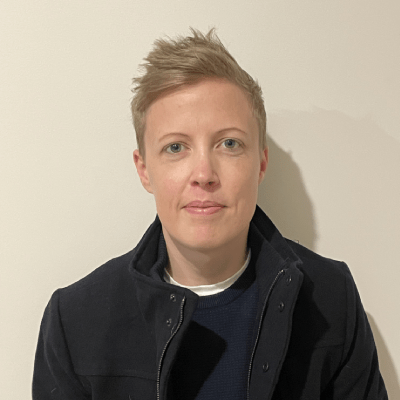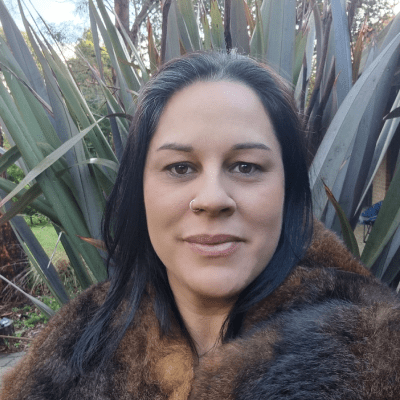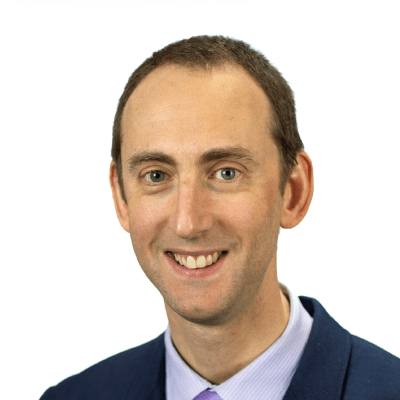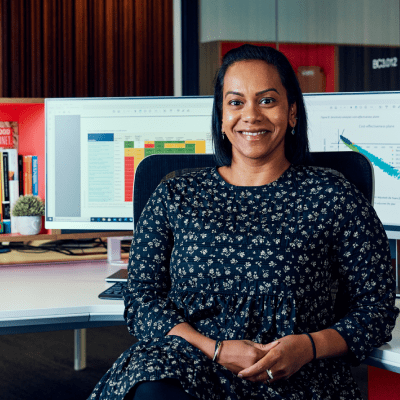Premier’s Awards for Health and Medical Research
Established in 1995, the Victorian Government’s Premier’s Awards for Health and Medical Research recognise the exceptional contributions of Victoria’s early-career health and medical researchers and highlight the breadth of work being undertaken in Victoria to make significant improvements to the lives of people around the world.
Recipients of the five category awards receive $5,000, and an additional $15,000 is granted to the winner of the Premier's Excellence award.
The five award categories include:
- Basic Science Researcher
- Clinical Researcher
- Aboriginal Researcher undertaking research in any field of health and medical research
- Health Services Researcher
- Public Health Researcher
2023-24 Winners
Award category winners for the 2023-24 Premier’s Awards for Health and Medical Research were announced at this year’s awards ceremony which was held on Tuesday 23 April 2024.
- Premier’s Excellence Award and Public Health Researcher Award – Dr Rongbin Xu
- Aboriginal Researcher undertaking research in any field of health and medical research Award – Ms Joanne Luke
- Basic Science Researcher Award – Dr Sarah Garnish
- Clinical Researcher Award – Dr Laura Ross
- Health Services Researcher Award – Dr Rob Mitchell.
Further information regarding this year’s winners will be announced in coming weeks.
2022 Winners
Dr Emily Lelliott
 In the past decade, groundbreaking therapies have emerged that extend the life expectancy of melanoma patients and, in some cases, lead to cures. However, despite this, an Australian life is still lost to melanoma every six hours. Dr Lelliott recognised the urgent need to understand why these therapies succeed in some patients but fail to save others. Her research aimed to unravel the underlying effectiveness of these therapies and identify ways to enhance their efficacy in a broader range of patients.
In the past decade, groundbreaking therapies have emerged that extend the life expectancy of melanoma patients and, in some cases, lead to cures. However, despite this, an Australian life is still lost to melanoma every six hours. Dr Lelliott recognised the urgent need to understand why these therapies succeed in some patients but fail to save others. Her research aimed to unravel the underlying effectiveness of these therapies and identify ways to enhance their efficacy in a broader range of patients.
In the past decade, groundbreaking therapies have emerged that extend the life expectancy of melanoma patients and, in some cases, lead to cures. However, despite this, an Australian life is still lost to melanoma every six hours. Dr Lelliott recognised the urgent need to understand why these therapies succeed in some patients but fail to save others. Her research aimed to unravel the underlying effectiveness of these therapies and identify ways to enhance their efficacy in a broader range of patients.
The research uncovered unexpected effects of melanoma therapies on the immune system, specifically on a type of immune cell called T-cells. T-cells have abilities to identify and eliminate harmful diseases, including cancer, within the body. Dr Lelliott's discoveries revealed that therapies initially designed to target melanoma cells also significantly enhance the cancer-fighting capacity of T-cells. This insight can be strategically leveraged to improve therapeutic effectiveness across various contexts.
This research has not only opened a new area of focus but has also influenced the design of clinical trials, not only for melanoma treatment but also for other types of cancer.
Through her research, Dr Emily Lelliott has advanced understanding of melanoma therapies and their interactions with the immune system. Her work has the potential to reshape the landscape of cancer treatment, offering hope for improved outcomes and ultimately saving more lives.
Dr Shawana Andrews

Dr Shawana Andrews did the ‘Cloaked in Strength’ study to explore the lived experiences of Domestic and Family Violence (DFV) among urban Aboriginal women. This study involved engaging 17 Aboriginal mothers in Melbourne through yarning interviews and a series of possum skin cloak workshops, allowing their stories of DFV to be considered.
The study explored the marginal position of Aboriginal women, including in private and public, their communities, and across society. The analysis identifies Aboriginal women’s relationships and how structures of power impact their mothering and obscure DFV accountability.
Several significant areas of discussion emerge from this research, including the perpetuation of silences surrounding DFV, the importance of understanding the relationality of Aboriginal women, and their agency in the management of daily experiences of DFV.
A significant conclusion is that DFV research is important to Aboriginal women and can un-silence Aboriginal women’s voices. The thesis has contributed valuable evidence that can inform policy and practice reforms related to DFV. It has identified the nuanced experiences of Aboriginal women placing gender at the centre of the work and challenging existing frameworks in child protection, DFV, and Aboriginal health and welfare policy and practice.
The study identifies that the health outcomes of Aboriginal women living with DFV often encompass complex and long-term psychological traumas that are significantly unaddressed. Dr Shawana Andrews’ research has the potential to be transformational for Aboriginal women by recognizing the nuanced nature of mothering within the context of DFV and acknowledging the gendered lived experiences associated with it.
Dr Kathryn Connelly
 Dr. Kathryn Connelly's research addresses the need for new treatments in systemic lupus erythematosus (SLE), an incurable autoimmune disease. Despite demand for effective therapies, there has been a lack of success in clinical trials for SLE. One challenge is inadequate clinical trial endpoints, which often fail to capture meaningful improvements.
Dr. Kathryn Connelly's research addresses the need for new treatments in systemic lupus erythematosus (SLE), an incurable autoimmune disease. Despite demand for effective therapies, there has been a lack of success in clinical trials for SLE. One challenge is inadequate clinical trial endpoints, which often fail to capture meaningful improvements.
Recognising this gap, Dr. Connelly's research focuses on developing an instrument and endpoint to measure treatment response in SLE clinical trials accurately. To do this, she assembled an international taskforce of lupus clinical experts, patient representatives, and experts from pharmaceutical companies. Dr. Connelly aims to understand the limitations of existing trial endpoints, address knowledge gaps, and form a step-by-step plan to create and implement a new instrument and endpoint.
By introducing more robust and patient-centric measures, Dr. Connelly's research aims to enhance the evaluation of potential therapies and facilitate the approval of novel treatments for SLE. This work has the potential to impact the lives of people living with SLE by improving their quality of life and expanding their treatment options.
Dr Owen Bradfield
 Legal complaints against doctors provide important mechanisms for monitoring and maintaining healthcare standards. However, they can also be distressing for doctors, with evidence that they can double a doctor’s risk of depression, anxiety, and suicidal ideation.
Legal complaints against doctors provide important mechanisms for monitoring and maintaining healthcare standards. However, they can also be distressing for doctors, with evidence that they can double a doctor’s risk of depression, anxiety, and suicidal ideation.
Dr Owen Bradfield’s research explores the relationship between legal complaints against doctors and their well-being. Through analysis of legal cases, legislation, and extensive datasets, he demonstrates that regulatory processes designed to protect the public do not always identify or mitigate risk.
The research finds that punitive regulations can discourage candour, encourage concealment of mistakes, and create fear of seeking help, which can worsen health outcomes for doctors and potential public risks. The findings highlight that to safeguard patient care and support doctors' well-being, systemic issues in the regulation of healthcare standards must be addressed.
Dr Bradfield's work deepens our understanding of the balance between competing public and practitioner interests in a regulatory context. This work offers a pathway for reforms that protect doctors' well-being, uphold the highest standards of patient care, and ensure a safer healthcare system.
Dr Jaithri Ananthapavan

Dr. Jaithri Ananthapavan’s research focuses on preventive health measures targeting obesity in Australia. Her work examines how economic evidence can be used to evaluate preventative health programs and inform decision-making in shaping effective policies.
The research looked specifically at cost-benefit analysis (CBA) as a tool to evaluate obesity prevention initiatives. To test the suitability of using CBA to assess obesity prevention initiatives, Dr Ananthapavan developed a comprehensive CBA framework specifically designed for preventive health policies and applied it to the assessment of a supermarket-based obesity prevention intervention.
These findings provide valuable insights that can inform the implementation of the National Obesity and National Preventive Health strategies. Dr Ananthapavan's research contributes to improving the health outcomes of all Victorian’s and informs evidence-based decision-making in tackling the obesity epidemic.
Page last updated: 24 April 2024
